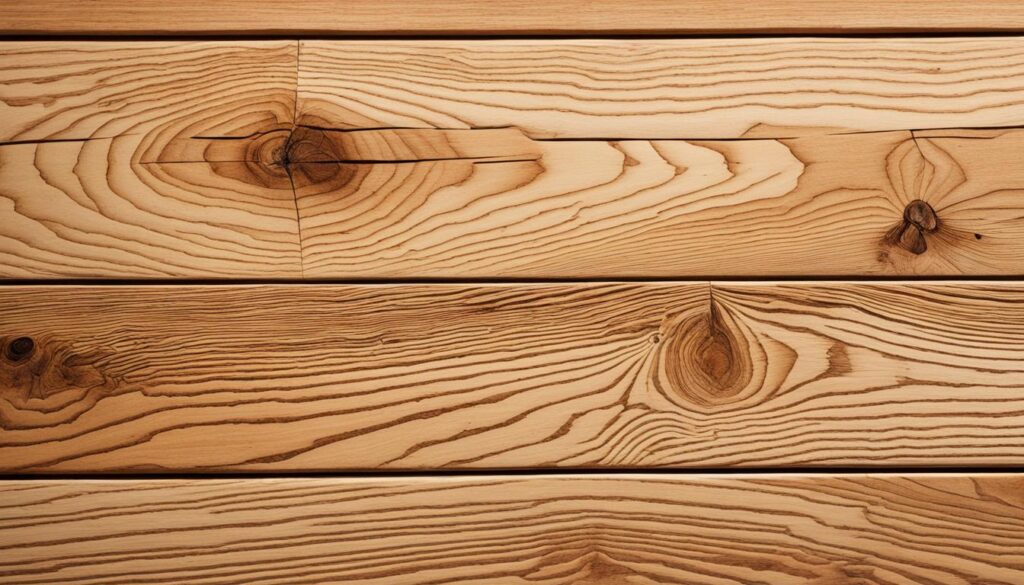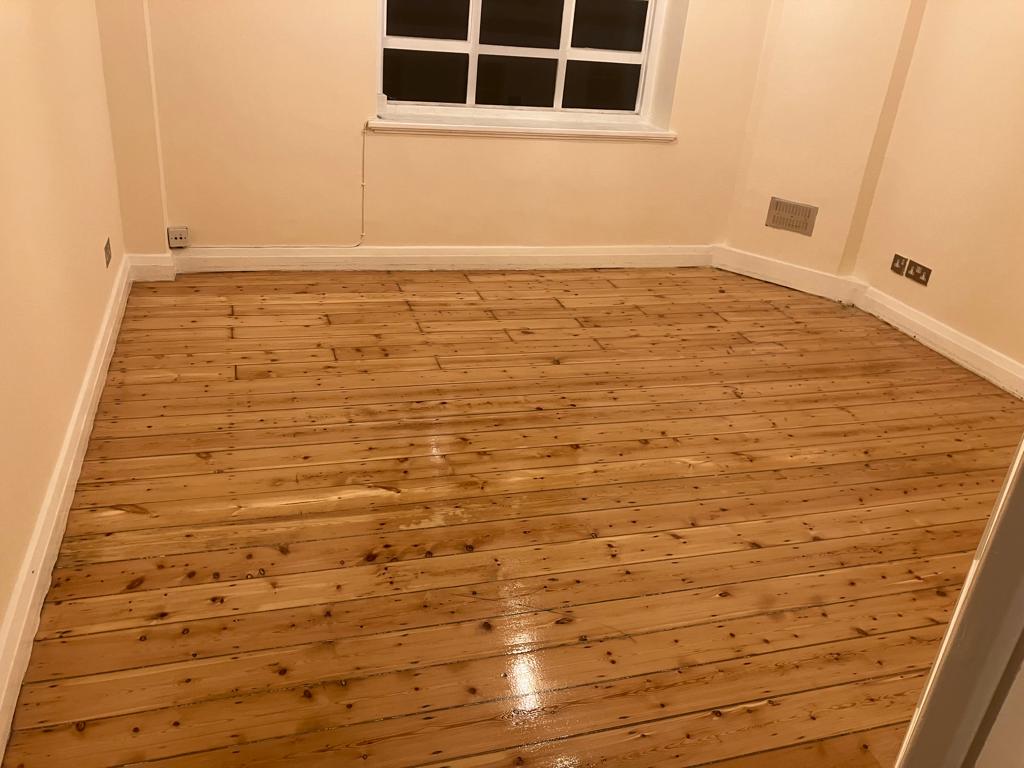Sourcing local sustainable wood flooring is not only an eco-friendly choice but also a sustainable solution for your home. By opting for wood flooring that is sourced locally and produced using sustainable practices, you can enhance the beauty of your home while minimizing your environmental impact. In this article, we will explore the benefits of sourcing local sustainable wood flooring and provide tips on how to make the best choice for your home improvement project.
Key Takeaways:
- Choosing local sustainable wood flooring is an eco-friendly and sustainable option for your home.
- Sustainable wood flooring is produced using renewable materials and environmentally friendly practices.
- Wood flooring offers numerous benefits, including durability, recyclability, and improved indoor air quality.
- Additional practices such as using FSC certified wood and opting for reclaimed materials can enhance the sustainability of wood flooring.
- Consider other flooring options, such as vinyl flooring or cork flooring, to find the best fit for your home.
Understanding Sustainable Flooring
Sustainable flooring is an environmentally conscious choice that is produced using renewable materials and methods with minimal environmental impact. It takes into account various factors such as the source material, production process, life cycle, and end-of-life disposal, making it a sustainable and responsible flooring option. Wood flooring, in particular, is widely recognized as sustainable due to its renewable source, energy-efficient production process, durability, and recyclability at the end of its life.
One of the key elements of sustainable flooring is the use of renewable materials. Wood, as a natural resource, can be sustainably harvested from responsibly managed forests. This ensures that for every tree cut down, new ones are replanted to maintain a continuous supply of wood. By using materials that can be replenished, sustainable flooring helps to preserve our natural resources for future generations.
The production process of sustainable flooring also plays a crucial role in minimizing its environmental impact. Wood flooring is produced through energy-efficient methods that prioritize sustainability. By using advanced technologies and practices, manufacturers can reduce energy consumption and waste, making wood flooring a more eco-friendly choice compared to other flooring options.
Another aspect of sustainable flooring is considering the entire life cycle of the product. From manufacturing to installation and maintenance, sustainable flooring aims to minimize its ecological footprint at every stage. Wood flooring is known for its durability, with the ability to last for decades when properly cared for. This longevity reduces the need for frequent replacement, resulting in less waste and resource consumption over time.
When it comes to the end of its life, wood flooring can be recycled or repurposed, further contributing to its sustainability. By ensuring that wood flooring doesn’t end up in landfills but instead continues to serve a purpose, we can extend the lifespan of the material and reduce waste.
Sustainable flooring is a popular choice among eco-conscious homeowners who prioritize both aesthetics and environmental responsibility. By opting for flooring options that are produced sustainably and have a minimal impact on the environment, we can create beautiful and durable spaces while actively contributing to the preservation of our planet.
“Sustainable flooring is not just about the materials used, but also takes into consideration the production process, life cycle, and end-of-life disposal. By making informed choices, we can create a sustainable and eco-friendly living environment.” – Sustainable Living magazine
Sustainable Flooring Comparison
| Criteria | Wood Flooring | Vinyl Flooring | Tile Flooring |
|---|---|---|---|
| Renewable Materials | ✅ | ❌ | ✅ |
| Minimal Environmental Impact | ✅ | ❌ | ✅ |
| Durability and Longevity | ✅ | ❌ | ✅ |
| Recyclable | ✅ | ❌ | ✅ |
As shown in the table above, wood flooring excels in terms of using renewable materials, minimal environmental impact, durability, and recyclability when compared to vinyl and tile flooring. This makes it a more sustainable choice for environmentally conscious individuals who seek flooring options with a lower ecological footprint.

Wood flooring offers a natural and timeless aesthetic that can enhance any interior space. Its sustainability, coupled with its beauty and long-term durability, make it a compelling choice for those looking to create a sustainable and eco-friendly home. By understanding the principles behind sustainable flooring and making informed decisions, we can contribute to a more environmentally conscious future.
The Benefits of Wood Flooring
Wood flooring is a green choice with numerous benefits. First, wood is a renewable resource as trees can be replanted and grown to maturity, ensuring a continuous supply. The production process of wood flooring is also energy-efficient compared to other flooring materials. Wood floors are highly durable and can last for generations, reducing the need for frequent replacement. At the end of its life cycle, wood flooring can be recycled or biodegraded, minimizing its impact on landfills. Additionally, wood floors contribute to improved indoor air quality as they do not trap dust, allergens, or emit VOCs like synthetic materials.
Wood flooring offers the following advantages:
- Renewable Resource: Wood is a sustainable and renewable resource as trees can be replanted.
- Energy-Efficient Production: The manufacturing process of wood flooring is energy-efficient, making it environmentally friendly.
- Durability and Longevity: Wood floors are highly durable and can last for generations, reducing the need for replacement.
- Recyclable: At the end of its life cycle, wood flooring can be recycled or biodegraded, minimizing waste and landfills.
- Improved Indoor Air Quality: Wood floors do not trap dust, allergens, or emit volatile organic compounds (VOCs), contributing to better indoor air quality.
Overall, wood flooring provides an eco-friendly and sustainable flooring option that enhances the beauty of a space while ensuring a minimal environmental impact.
| Benefits of Wood Flooring |
|---|
| Renewable Resource |
| Energy-Efficient Production |
| Durability and Longevity |
| Recyclable |
| Improved Indoor Air Quality |
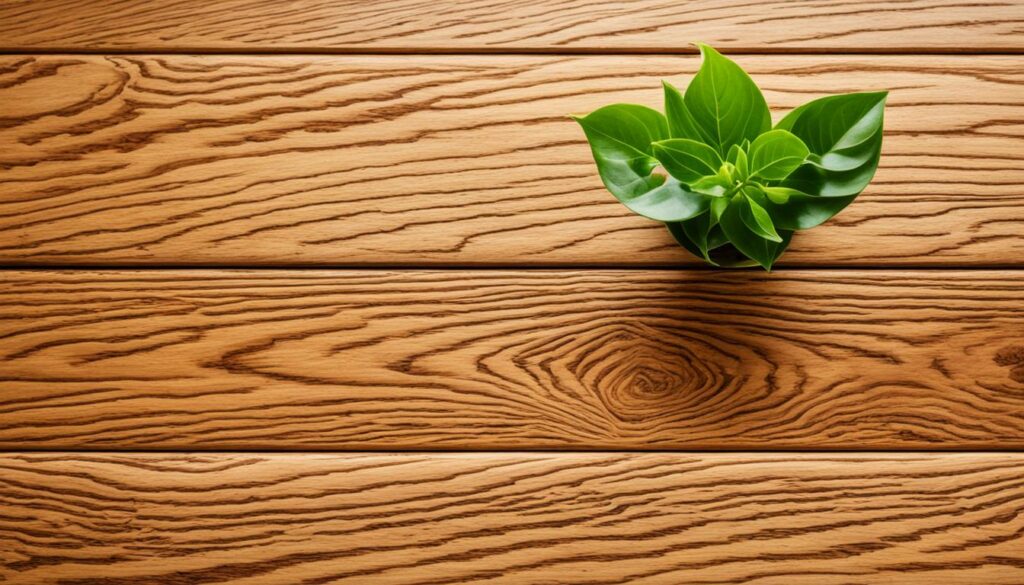
Making Wood Flooring Even Greener
While wood flooring is already a green choice, there are additional practices that can make it even greener. By incorporating these practices, you can enhance the sustainability of your wood flooring and reduce your environmental impact.
Choosing FSC-Certified Wood
One way to make your wood flooring more sustainable is by choosing FSC-certified wood. FSC stands for Forest Stewardship Council, which ensures that the wood is sourced responsibly from sustainable forests. By opting for FSC-certified wood, you can have peace of mind knowing that your flooring is environmentally friendly and contributes to the preservation of forests.
Opting for Local Wood Species
Another way to make wood flooring greener is by selecting local wood species. Choosing wood that is locally sourced reduces the carbon footprint associated with transportation. It also supports local communities and promotes the use of native wood species, which can add unique charm and character to your home.
Considering Reclaimed Wood
Reclaimed wood is an excellent eco-friendly option for wood flooring. It involves using salvaged materials from old buildings, barns, or other sources to create beautiful flooring. By utilizing reclaimed wood, you not only preserve existing trees but also give a second life to these materials, reducing the demand for new wood.
Regular Maintenance for Extended Lifespan
Regular maintenance is vital for ensuring the longevity of your wood flooring. By taking care of your floors through proper cleaning, prevention of water damage, and addressing any issues promptly, you can extend their lifespan. This reduces the need for frequent replacement and minimizes waste.
Using Sustainable Finishes
When finishing your wood flooring, opt for sustainable finishes. Look for matte finishes with low VOC content (volatile organic compounds). VOCs are chemicals that can be harmful to both the environment and indoor air quality. By using sustainable finishes, you can enhance the eco-friendliness of your wood flooring while creating a beautiful, long-lasting finish.
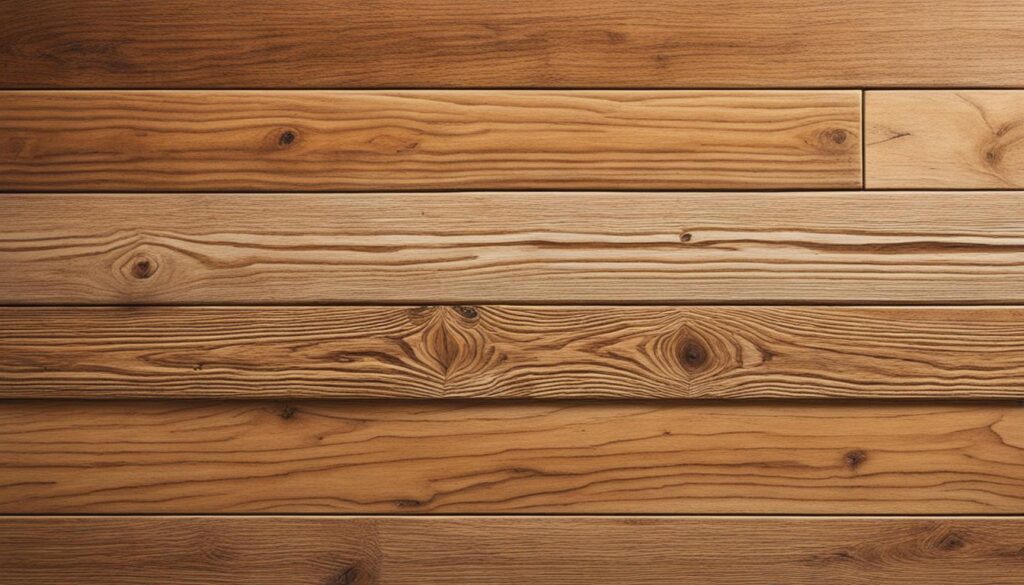
By implementing these practices, you can make your wood flooring even greener and contribute to a more sustainable home environment. Choosing FSC-certified wood, selecting local wood species, considering reclaimed wood, maintaining your floors regularly, and using sustainable finishes all play a crucial role in reducing the environmental impact of your wood flooring.
Other Flooring Options to Consider
While wood flooring is a popular choice, there are other flooring options to consider as well. Here’s a breakdown of the different options:
Vinyl Flooring
Vinyl flooring is an inexpensive option that comes in a variety of styles and designs. However, it’s important to note that vinyl flooring has a high environmental cost as it’s made from non-renewable resources and can release toxic chemicals during production and disposal.
Carpet
Carpet is a popular choice for its affordability and comfort. However, it has a significant environmental impact as it’s made from synthetic materials derived from petrochemicals. Carpet is also prone to trapping allergens, dust, and microorganisms, which can affect indoor air quality.
Stone Flooring
Stone flooring, such as marble or granite, is known for its durability and natural beauty. It’s an excellent choice for high-traffic areas and wet areas like bathrooms and kitchens. However, stone flooring can be expensive, cold underfoot, and requires regular maintenance to keep it looking its best.
Tile Flooring
Tile flooring is another durable option suitable for wet areas. It comes in a variety of materials, including ceramic, porcelain, and natural stone. However, tile flooring can be costly, especially if you opt for high-quality materials, and the installation process requires skill and precision.
Cork Flooring
Cork flooring is a renewable and eco-friendly option made from the bark of the cork oak tree. It offers good shock absorption properties, making it comfortable to walk on and reducing noise. Cork flooring is also resistant to mold, mildew, and pests. However, it’s less durable than other flooring options and requires regular maintenance to protect it from scratches and dents.
Bamboo Flooring
Bamboo flooring is another eco-friendly choice due to its fast-growing nature. It’s a renewable resource that can be harvested in just a few years, making it a sustainable alternative to hardwood. Bamboo flooring is also durable and resistant to moisture. However, it’s important to choose bamboo flooring that is responsibly sourced and manufactured to ensure its quality and sustainability.
Engineered Wood Flooring
Engineered wood flooring combines the look of wood with enhanced dimensional stability. It consists of multiple layers of wood veneer stacked and glued together, resulting in a more stable product that is less prone to expansion and contraction. Engineered wood flooring is suitable for use with radiant heating systems, making it a popular choice for modern homes.
Wide Pine Flooring
Wide pine flooring evokes a traditional charm and is a suitable choice for historical homes. It offers a warm and rustic aesthetic that can complement various design styles. While not as durable as hardwood, wide pine flooring develops wear marks over time, adding to its character and charm.
Each flooring option has its own unique characteristics and considerations. Consider your budget, sustainability goals, and the specific requirements of your space when choosing the right flooring for your home.
The Timeless Appeal of Wood Flooring
Wood flooring has been a popular choice in New England for centuries due to its timeless appeal. It adds warmth and character to any space and can be customized to fit various design styles. Wood floors are highly durable and can withstand heavy foot traffic. Milling wood flooring in a quarter-sawn orientation reduces swelling during the summer months and enhances its longevity. A high-quality installation by skilled professionals ensures the best results, utilizing the wood efficiently and producing a superior finished product. To maintain the eco-friendly nature of wood flooring, it is recommended to use sustainable finishes that are impregnated with matte finishes and low in VOC content.
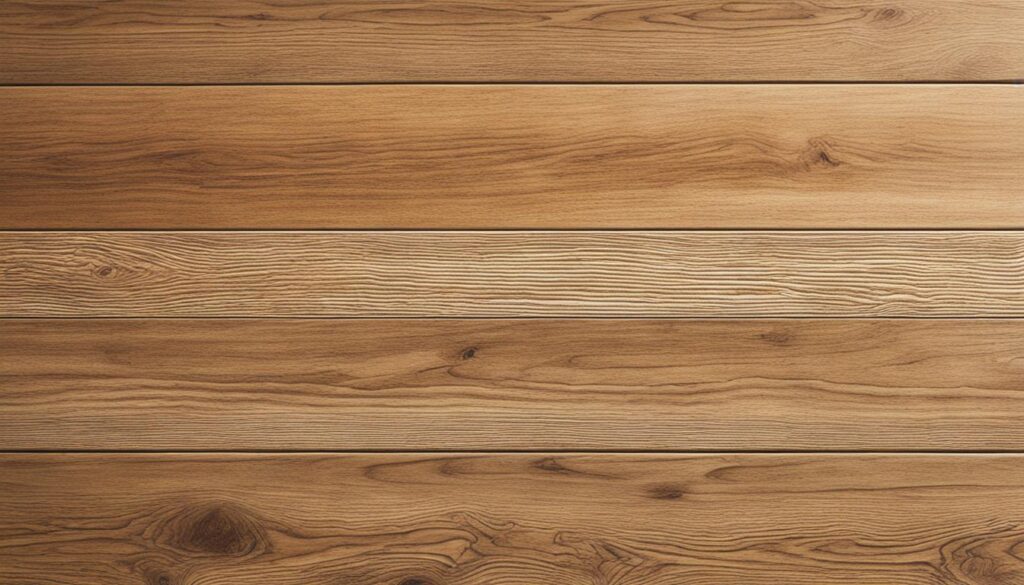
Enhancing the character of any space, wood flooring is a timeless choice that has captivated homeowners in New England for centuries. With its warm and inviting nature, wood flooring adds a touch of elegance and sophistication to any room. Whether your home boasts a traditional or contemporary design, wood flooring can be customized to fit seamlessly, offering a beautiful foundation to your interior decor.
The Durability of Wood Flooring
One of the key reasons why wood flooring remains popular in New England is its exceptional durability. Wood floors are engineered to withstand heavy foot traffic, making them a suitable choice for high-traffic areas such as hallways, living rooms, and kitchens. With proper care and maintenance, wood flooring can last for decades, providing a long-lasting investment for your home.
Highlighting the Character of Your Space
Wood flooring brings a unique sense of character and charm to any room in your home. Each wood plank is distinct, showcasing the natural variations and grain patterns of the wood species. Considered a living material, wood flooring evolves over time, developing a beautiful patina that tells a story of its own. Whether you prefer the rustic appeal of wide planks or the sleek elegance of narrow ones, wood flooring offers endless possibilities for creating a space that reflects your personal style.
Milled in a Quarter-Sawn Orientation for Enhanced Longevity
Wood flooring that is milled in a quarter-sawn orientation offers enhanced durability and longevity. This milling technique produces planks that have a straight grain pattern, reducing the wood’s natural tendency to expand and contract with changes in humidity. As a result, quarter-sawn wood flooring is more stable and less prone to warping or cupping. By choosing quarter-sawn wood flooring, you can enjoy the beauty of wood with added peace of mind.
High-Quality Installation for Superior Results
The installation of wood flooring is a critical step that should be entrusted to skilled professionals. When installed correctly, wood flooring not only looks beautiful but also performs optimally. Experienced installers have the expertise to utilize the wood efficiently, minimizing waste and maximizing the use of each plank. This attention to detail ensures a seamless and visually appealing result that enhances the overall aesthetics of your space.
Sustainable Finishes for an Eco-Friendly Choice
To maintain the eco-friendly nature of wood flooring, it is important to use sustainable finishes that are low in VOC content. Volatile Organic Compounds (VOCs) are harmful chemicals that can be released into the air, contributing to indoor air pollution and negatively affecting your health. By opting for wood flooring with sustainable finishes, you can create a healthier and more sustainable living environment for you and your family.
The Charm of Wide Pine Flooring
Wide pine flooring offers a unique charm reminiscent of the colonial era. It has been a popular choice for traditional homes in New England, earning Maine the nickname “The pine tree state.”
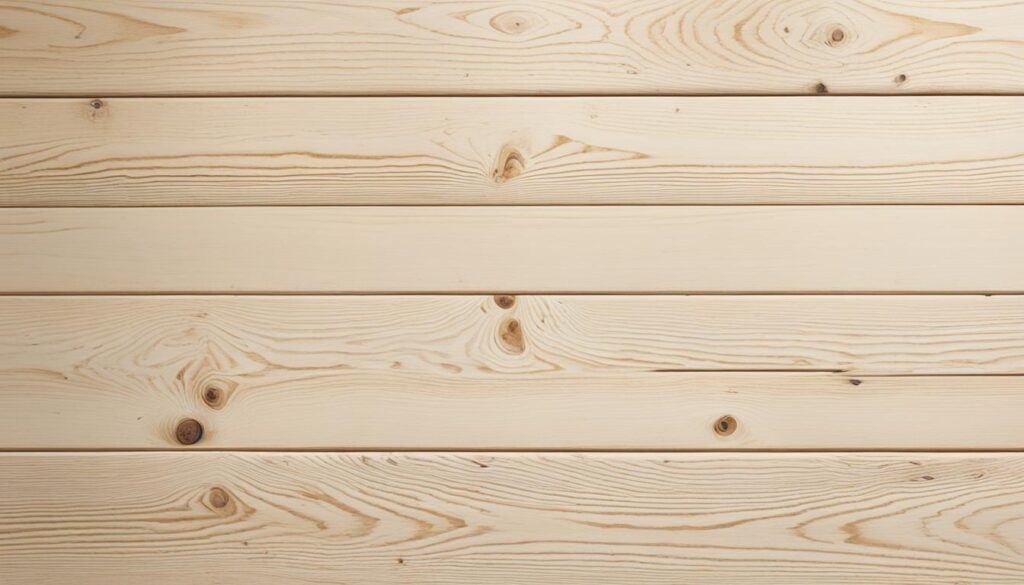
While not as durable as hardwood, wide pine flooring develops wear marks over time, adding character to the space. Red pine is a harder and more durable option compared to white pine, although it has become scarce. If you’re looking to create a traditional or rustic ambiance, wide pine flooring is an excellent choice.
Conclusion
Sourcing local sustainable wood flooring is the ideal choice for homeowners who prioritize eco-friendly and durable flooring options. Wood flooring offers a multitude of benefits, making it a sustainable and environmentally friendly choice for your home improvement project. By incorporating additional sustainable practices such as using FSC-certified wood, choosing local wood species, opting for reclaimed materials, maintaining wood floors regularly, and using sustainable finishes, you can further enhance the eco-consciousness of your wood flooring.
With its timeless appeal and natural charm, wood flooring not only adds beauty to your space but also reflects your commitment to sustainable home improvement. The renewable nature of wood, energy-efficient production process, and long lifespan make it a sustainable flooring solution. Investing in sustainable wood flooring ensures that you are making an eco-friendly choice that will last for years to come.
When it comes to eco-friendly wood floor products, there are a variety of options available to suit your style and preferences. From sustainable wood species to FSC-certified wood flooring, you can find the perfect green flooring option that aligns with your values. Whether you choose renewable wood flooring or opt for reclaimed materials, you can have peace of mind knowing that your choice contributes to a more sustainable future.
